46 Types of Succulents and Cactus: Growing and Caring Tips
The design of a succulent garden with different types of succulents and cactus is perfect for warm, temperate, and even cold places. Generally, succulents are drought-tolerant. Due to thick leaves, succulents can store moisture for days. As succulents keep water in their leaves, these plants can live a long time while having little water in the sun.
Succulents are ideal plants for people who live a busy life. If you often do not stay at home because of work, these plants are the best ones for you. These plants require little attention, whereas they last for a longer period of time.
On the other hand, succulents work great for adding structure and vibrancy to homes. One can even grow these plants indoors in containers without facing any problem. Most succulents flourish well with full sun in hot weather. But, they require attention when it comes to cold temperatures. Succulents can tolerate cold climate conditions up to a certain level. So, let’s know all about succulents and their different varieties here.
More...
Differences Between Succulent vs. Cactus
Most of the time, people use the terms cactus and succulent interchangeably. Despite the fact, these two are not scientifically similar. After understanding the relationship between these two, you will be able to distinguish them properly.
Succulents are those plants that store water in their roots, leaves, and stems. Within the category of succulents, there are more than 60 different plant species including sedum, haworthia, aloe, sempervivum, and cactus. As you know, cactus is a fleshy plant that store water, which makes it a part of this broader group. Hence, all cacti are succulents.
Cacti range from thin and tall to round and short. It usually does not have branches or leaves. So in order to be a cactus, a succulent plant should have areoles. Here, areoles are round and small mounds of flesh, where leaves, flowers, spines, and hair grow from the plant. Areoles can only be found on cacti and not succulents. Also, cactus has no or a few leaves.
Sometimes, succulents are referred to as cacti due to spines and thorns. However, this feature does not qualify a succulent for a cactus. One can make a difference with the areoles. Without them, a succulent cannot be a cactus. Hence, all cacti are considered to be succulents but not the other way round.
46 Different Types of Succulents
There are lots of varieties available when it comes to succulents. As stated above, succulents include all types of cactus, this list will also constitute some varieties of cactus. So, let’s know about some of these impressive varieties right below!
1. Aloe Vera

Aloe Vera is one of the most popular succulents from the Arabian Peninsula. This succulent grows in tropical weathers. It is usually known for its agricultural and medicinal uses. Most of the people grow these plants indoors for decorative purposes. It is a type of succulent. This plant variety requires sandy potting, partial shade, and often watering.
2. Acanthocalycium Thionanthum
This succulent variety comes in various forms. It is a type of cactus. It offers lots of variations in terms of spine sizes and flower colors. It belongs to Argentina, Salta, Catamarca, and Tucuman. These plants grow up to 6 inches in height. They require full-day light, often watering, and temperature up to minus 12 degree Celsius. For this succulent, the soil needs to be porous and regular cactus soil.

3. Ariocarpus lloydii

This succulent variety is a type of cactus. It has a few yet fat tubes, which broadly circled at the apex. This one is quite a big tubercle as compared to other varieties. It originates from Central Mexico. In order to thrive well, it needs full-day light, less water, and loose mineral soil.
4. Armatocereus Godingianus
This variety belongs to the cactus family. It looks like a cactus tree with origins in South America. This plant bears fruits and white flowers with a particular spiny ovary. To thrive well, these plants require a full day to partial sunlight, often watering, and non-organic draining soil. It can sustain in hard to minus 10 degrees Celsius temperature.

5. Bishop’s Cap
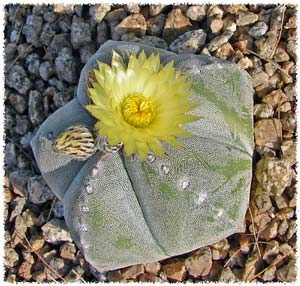
Also known by Astrophytum coahuilense, this variety is a type of cactus. It shares distinctive characteristics from other similar plants such as A. myriostigma. Both of these varieties look identical but have different embryos, seeds, flowers, and fruits. This specific variety bears yellow flowers with red hearts.
6. Medusita
This variety originates from Mexico, where it belongs to the cactus family. It is also known by the other name, Astrophytum caput-medusae. It grows up to 6 inches. These plants need medium watering, non-organic draining soil, and partial shade. It can sustain well in temperature from 0 to 25 degrees Celsius. Read more about Medusita

7. Shafer’s Opuntia

This variety is a type of cactus, also called Austrocylindropuntia shaferi. It forms erect clumps with moderate branches. It grows up to 12 inches. These plants need regular watering on dried-out soil. They bear red flowers and sustain in weathers from harsh to minus 10 degrees Celsius. This variety is best for containers.
8. Blue Barrel
Also called Ferocactus glaucescens, Blue Barrel is a barrel-shaped cactus. This variety has a greenish-blue skin and medium size. These plants are usually solitary. As the plant ages, it keeps on producing a couple of heads. Eventually, it forms a big mound. It requires some water and well-draining soil.

9. Ball Cactus

It is even known as Parodia magnifica having origins from Argentina, Brazil, Paraguay, and Uruguay. This plant forms a depression on the crown, which distorts on aging. It measures around 36 inches. To plant this variety, you need well-draining soil, partial shade, and often watering. It bears yellow flowers. And of course, this variety is a kind of cactus.
10. Aylostera Narvaecensis
It is a kind of cactus, which forms a clustering and small cactus. Its branches form groups or mounds up to 15 cm wide. These plants have soft-spined stems and pink flowers. This variety originates from Bolivia. It grows up to 6 inches in hardiness zones 9 to 11. This plant requires not much watering.

11. Bird’s Nest
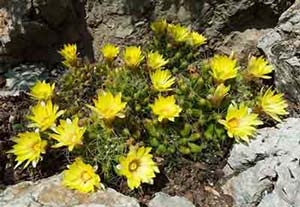
This succulent variety is even called “Mammillaria longimamma”. It is a kind of cactus, which forms around 10 to 50 branches. It grows as solitary and forms clusters at an early age. It belongs to Hidalgo, Guanajuato, and Queretaro. For planting this variety, you require mineral soil. It survives hardy to 0 degree Celsius temperature.
12. Beaver Tail
Also known as Opuntia basilaris, this variety belongs to the cactus family. It originates from Arizona, Utah, Mexico, Nevada, and California. This succulent variety forms branches in clumps. One can grow this plant in hardiness zones ranging from 8 to 11. It requires often watering, partial shade, and mineral soils or even tolerates sand.

13. Monk’s Hood
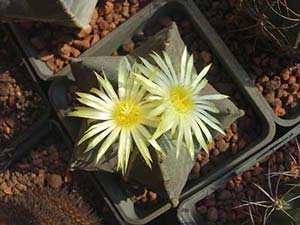
This plant variety is known as Astophytum myriostigma. It belongs to the cactus family. This variety shares its origins with Mexico. This spineless cactus plant comprises a few branches. It bears yellow flowers. To plant this succulent, you need stony or calcareous soils, moderate watering, and partial shade. It even tolerates drought.
14. Living Rock
Also called Ariocarpus confusus, this variety is a cactus. It develops magenta, pink, or white flowers. Sometimes, these flowers could be of multiple colors. This plant variety grows up to 6 inches. It bears temperature up to minus 10 degrees Celsius. For cultivating this plant, you need non-organic draining soil.

15. Brain Cactus

Brain Cactus or Stenocactus multicostatus is a cactus variety. It belongs to Mexico, which forms wavy and acute ribs. These ribs are pleated densely with one another. This plant comprises 6 to 18 flattened spines. It flourishes well in draining mineral potting, though works in every soil. It tolerates even drought.
16. Burro’s Tail
This succulent variety is a kind of succulent. These plants have long stems with beautiful bluish-green leaves. They bear pink-red flowers during summers. This plant variety is referred to as “Sedum morganianum”. It grows up to a size of 24 inches. One needs well-draining soil to plant this succulent. It makes a perfect indoor plant.
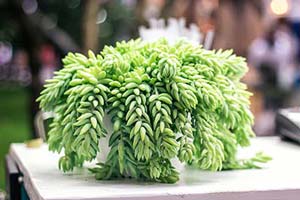
17. Flaming Katy

This succulent variety is a type of succulent. It is a common houseplant spread over Madagascar. These plants do well in clay pots having holes at the bottom. One can even place this decorative plant on tables or desks as a centerpiece. It bears flowers in different colors like gold, red, orange, and pink.
18. Brazilian Prickly Pear
This succulent variety shares its origins with Mexico, Peru, Brazil, Florida, Paraguay, Bolivia, Andes Argentina, and Honduras. It is a kind of cactus. It forms a tree-like and perennial cactus. This plant variety goes up to a height of 40 feet. It forms horizontal and short branches. It works well in every well-draining soil.

19. Button Cactus

As the name suggests, it is a cactus that originates from the United States of America. This cactus is even known as EpithelanthaMicromeris. The button cactus is of gray color, which bears pink flowers. It grows up to a height of about 6 inches. Button cactus does not have any branches.
20. Bunny Cactus
It is a cactus, which even referred to as Opuntia microdasys. The bunny cactus belongs to Mexico, which grows very near to the ground. This cactus has numerous branches, which grow about 1 meter. It does not have any spines but yellow-colored glochids.
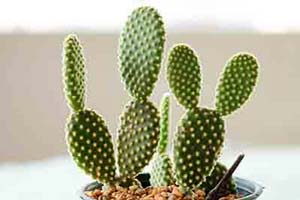
21. Strawberry Hedgehog

Also known as Echinocereus engelmannii, strawberry hedgehog belongs to Mexico and U.S.A. It bears spines of dark purple and yellow color. It is a type of cactus. These cacti grow about 24 inches. To plant this highly variable species, you need a loose or well-draining mix. One can grow this cactus in containers.
22. Cabega
Cabega is also a kind of cactus, which is a night-blooming type. It is even called Austrocephalocereus dybowskii. This cactus has branches around the base. It bears white flowers in tubular and bell shape. These cacti belong to Brazil and Northern and Eastern Bahia. They grow up a height of 144 inches.

23. Carmine Cob

Carmine Cob or Echinopsis Backebergii belongs to Bolivia. It is a small species of cactus. This plant variety blooms with pink and red flowers. It survives harsh temperatures to minus 10 degrees Celsius. These cacti look beautiful in small pots or containers. They grow about 6 inches.
24. Candelabra
Candelabra share its origins with Mexico. It is a cactus, which is even referred to as Myrtillocactus cohal. This cactus grows like a tree with numerous compact branches. It grows about 10 inches. These cacti survive just some decades. One can grow this cactus in pots using a well-draining mix.

25. Dwarf Chin
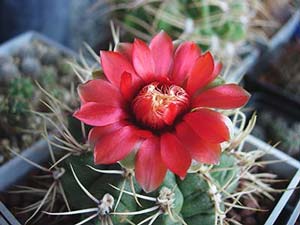
This plant variety is even referred to as spider cactus, gymnocalycium gibbosum, and dwarf chin cactus. It originates from Argentina. These cacti are solitary having radical spines. They are highly variable kind of cactus. One can plant this cactus variety in containers using a standard cactus mix. This cactus blooms orange, white, and pink flowers.
26. Catclaws
Also called Anstricocactus uncinatus, it is solitary and cylindrical cactus. This plant variety belongs to the U.S.A. and Mexico. There are three subspecies of this cactus type, which include wrightii, nominate, and crassihamatus. For planting this cactus, you need open mineral or sand-gritty soil.

27. Jade Plant
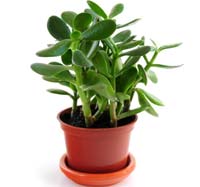
It is more commonly known as a money tree, lucky plant, friendship tree, and botanically as Crassula Ovata. This plant variety shares its origins with South Africa and Mozambique. Jade plants do not require much water and can sustain well even in harsh conditions. It is a kind of succulent, which grows around 10 inches.
28. Linkleaf
It is also known as Schlumbergera truncate or Christmas tree. This cactus variety comprises lots of branches. It bears flowers in multiple colors such as white, yellow, pink, or orange. Linkleaf belongs to Brazil, which grows around 24 inches. In order to grow this cactus, you need soil with sphagnum.

29. Claret Cup Hedgehog

It is even known as Echninocereus triglochidiatus. Claret Cup Hedgehog is a kind of mounding cactus. Under this category, you have plants with dense spines and without spines. These plants form bulbous piles up to a hundred stems in a spherical or cylindrical shape. They grow about 24 inches. These cacti require regular watering during summers.
30. Panda Plant
Also called Kalanchoe tormentosa, pussy ears, and chocolate soldier, Panda plant is a small-sized succulent. These plants have red-colored rimes on their edges. A panda plant is a perfect succulent for indoors. It grows about 1.5 inches only.

31. Mistletoe Cactus

It is also referred to as Rhipsalis mesembryanthemoides. As its name suggests, it is a type of cactus. This plant variety has strong stems all covered in little branches. It appears to branch out independently on aging. Mistletoe cactus grows around 24 inches. To plant this cactus, you require acidic, rich, or loose soil. It needs moderate moisture and partial shade for growing well.
32. Cleistocactus
As the name suggests, it is a type of cactus. These cacti have branching stems and short spines. They bloom green-colored flowers. These cacti share origins with Argentina and Bolivia. They grow about 48 inches. These showy flowers attract hummingbirds a lot, which makes them a perfect option for containers.
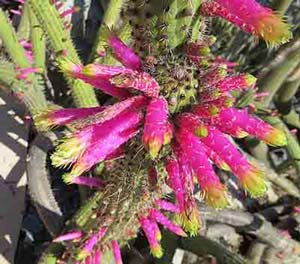
33. Old Man Opuntia

Also known as Austrocylindropuntia vestita, it is really a furry cactus. This plant variety belongs to Argentina. These cacti grow around 24 inches. To cultivate this plant, you need mineral or well-draining soil. It bears purple or pink flowers. This cactus is great for containers and does not even require much watering.
34. Saguaro Opuntia
It belongs to the cactus family. This plant variety forms a tree-like structure. It is even called Consoleafalcata. Saguaro Opuntia shares its origins with Halti. The cactus has dark green and glossy arms, which grows about 1.5 meters.

35. Creeping Devil
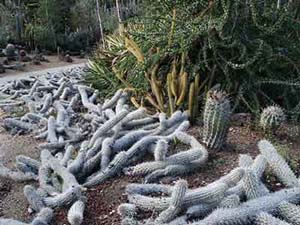
It is one of the amusing cactuses you will ever see. This plant variety originates from California and Baja. The cactus is even referred to as Stenocereuseruca. Creeping devil grows about 12 inches. When these cacti creep, they cover a huge area of the land. They bear white flowers. For planting this cactus variety, you need sandy soil.
36. Crown of Thorns
It is also known as Euphorbia Milii. This succulent is great for indoors as it adjusts really well to room temperatures and indoor environments. In order to take good care of this houseplant, place it in sunlight for about four hours a day. You need to water it when the soil goes completely dry.

37. Pincushion Cactus
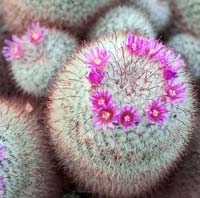
As its name suggests, pincushion cactus is a cactus that is even called Mammillaria Crinita. Here, the term “Mammillaria” means “Nipple” that refers to the tube-like structures. The plant has pointed spikes, which cover its entire exterior. It belongs to Mexico and the United States’ southwest areas.
38. Sedum spurium 'Roseum'
Roseum belongs to the succulent variety, which grows about six inches. It is a fast-growing succulent that looks great in planters or containers. During summers, this succulent develops clusters of pink flowers that pop up the décor of your home perfectly. These plants prefer full to partial shade.

39. Snake Plant

Also called as Sansevieria Trifasciata, this plant belongs to West Africa. It is a succulent variety, which is really easy to cultivate. Snake plants have long and variegated leaves with different green shades. It serves as a tolerant indoor succulent, which survives in low-light areas with little water.
40. Zebra Plant
It is also known as Haworthia Fasciata. This plant grows about six inches in height. It works as a great houseplant, which does not even require much care. Zebra plant acquires its name after the white variegated strips on the leaves. Due to its shallow roots, it is best to grow this plant in smaller pots.

41. Hens and Chicks

Hens and Chicks are also referred to as Sempervivum Tectorum. Here, the term “Sempervivum” signifies “live forever”. It belongs to the succulent variety. This houseplant propagates really fast and generates multiple offspring known as chicks. These plants bloom crown-shaped beautiful flowers.
42. Stonecrop
Also called as Sedum spp, this houseplant comes in various colors from pink to green and blue to silver. There are two kinds of sedums, creeping sedums and tall sedums. The tall ones comprise of long stems about three feet tall. During summers, these succulents sprout colorful flowers, which look great in a small garden. Meanwhile, creeping sedums are perfect for rock walls, rock gardens, and roofs.

43. Plush Plant

Plush plant is also known as Echeveria Pulvinata. These succulents have fine white hairs, which sparkle in full sun giving them a shimmering appearance. It belongs to Southern Mexico. Plush plant blooms orange and yellow flowers. It looks perfect in containers or on ground inside a garden. During warm months, you need to repot this plant.
44. Dudleya
Also called as Echeveria Spp, this plant belongs to the succulent variety. It shares its origins with California. This plant forms a rosette-like structure of leaves. Its leaves enclose rounded edges that can live for 100 years with proper care. Naturally, Dudleya grows on hills and avoid watering its leaves.

45. Pig’s Ear

This succulent is also referred to as Cotyledon Orbiculata. It gets its name due to its oval and thick leaves with red edges. During late summers, these plants bloom red and yellow flowers. On maturing, pigs’ ears grow about four feet in height. These plants look perfect in rock gardens, succulent beds, and hanging baskets.
46. Aeonium arboreum 'Zwartkop'
This plant is most commonly known as black rose due to its dark burgundy leaves that form a rosette. During winters, these plants bloom yellow flowers. These succulents thrive well in full sun and hence, are perfect for outdoors. One can add them to borders or flowers beds.

Here, ends our list of different types of succulents including some great types of cactus. Now, you have numerous options to choose from for your little gardens. If you do not know how to grow these succulents, have a look at the next section, where you will get to know how to grow them in containers.
How To Grow Succulents In Containers?
Succulents play really well if you want to add a new design to your container gardens. These plants with flesh leaves thrive even in simple pots. Their distinctive colors and shapes give growers an endless opportunity for creativity.
These fleshy-leaved plants evolve even in tough growing conditions. They do their best when grown in poor soil and hot sun. One can lend succulents for all kinds of garden uses such as rock gardens, stone walls, green roofs, or patio pavers. Meanwhile, it is easier to grow succulents in containers, troughs, or even small dishes made from terracotta, hypertufa, stone, or concrete. Have a look below for growing succulents in containers!
Select a planter
Since the 1900s, British gardeners have been cultivating plants in troughs. At that time, farmers left behind farmsteads for the city and eventually, abandoned hand-hewn stone troughs. Then, local gardeners realized that those troughs provided a perfect environment for nurturing succulents and alpine plants. So, that’s how container gardens came into being!
Today, stone troughs are really difficult to locate. If available, these authentic troughs are going to cost you a lot of money. Resourceful gardens bring out some alternatives such as dishes, troughs, and small containers prepared from a mix of perlite, peat moss, cement, and strengthening fibers. To prepare a trough, one has to blend these materials into a paste. A trough or dish is formed from this paste.
The end product is known by the name “hypertufa”. This trough holds some rustic character to it while being lighter than stone or concrete. You can even find these hypertufa pots and troughs online or at local garden stores.
Make use of a soil blend
For succulents, you need to use a well-drained planting medium and not something excessively rich. In your container, you can add around 25 percent of builder’s sand to regular potting soil. For most succulents, there is no requirement of fertilizer.
Choose your plants
When it comes to plants, you can go with either sedums or sempervivums if your garden does not come under zone 8 or zone 9. These succulent varieties are tough to zone 4 or zone 5. The best thing about succulents is that they produce miniature versions every year.
In sempervivums, there are two major types, Sempervivum tectorum and Sempervivum arachnoideum. In the first category, you have large-sized fleshy plants with an open face. In the next category, there are smaller plants in ball-like and round shape with silver webbing.
Meanwhile, sedums usually comprise of a finer texture. These plants compliment other plants perfectly while adding up a cascading element to your container’s composition. So, try out different varieties of succulents and find a perfect one for your garden.
Accessorize a bit
To add an attractive look to your containers, you can accessorize them a bit. If you are thinking of what to add to your sedums and sempervivums, there comes the creative part. You can go with shells, rocks, small mirrors, colored glasses, or other sculptural features. Undoubtedly, you can create a fantasy world inside your dish or trough garden. After finishing up, you will be amazed by your own creation.
What Types of Indoor Succulents Are Best?
People love to grow succulents indoors to enhance the look of their living doors and even, kitchens. If you want to grow a succulent inside, there are plenty of options. Indoor succulents support certain light and temperature conditions, which make these plants ideal for decorating indoor spaces.
Under these options, you have Jade Plant, Flaming Katy, Burro’s Tail, Panda Plant, and Aloe Vera. There are various types of flowering succulents like Crown of Thorns, Pincushion Cactus, Roseum, Snake Plant, and Zebra Plant, which look great indoors. It is really confusing to choose one variety out of these superb options. Try them out one by one to know your favorite out of all!
Tips For Growing Succulents
Proper care of succulents can be easy if you know some basics. You can ensure the happy and long life of succulents after following a few tips. In reality, succulents are a low-maintenance plant, which look great all year round.

Here, you will find some easy and simple tips to make a difference in how well succulents will survive.
Water
Succulents require more water but not very often. With having said that, succulents do not need too much water. If so, you are definitely going to lose your succulents due to overwatering. On the other hand, these plants need their soil to be soaked and dried out before you water them again. What you need to do is soak the soil and let it completely dry out.
Another fact about succulents is that the thicker the leaves are, the less water they require. For instance, Aeoniumzwartkop will require more water than Pachyveria royal flush.
Soil
As stated earlier, succulents need their soil to be completely dry out before watering again. For this, you need well-drained soil. When it comes to soil, you have to mix something porous and light to normal soil in a 1:1 ratio so as to increase the drainage. In this case, you can use perlite and soil or even use vermiculite and coconut coir mix.
Sunlight
Succulents require lots of sunlight to fully grow. However, you do not have to place them directly in sunlight during hot summers when outdoors. These plants are very much prone to sunburn. Instead, you can keep your succulents somewhere shady, where they will remain relatively cool.
If kept indoors, you need to place these plants in bright light for most parts of a day. On spotting sunburn signs like black or brown spots, move them where there is no direct light. You can easily notice if your plant is getting sufficient light or not by their stretching.
If you find your plant to be tall with lots of spaces between leaves, it means that it is trying to find some light. So, you have to look for these signs and keep them in the right place accordingly.
Propagate
Succulents tend to propagate quite easily. One can easily grow the succulent garden by just taking off leaves and putting them into soil. Certainly, seeing these leaves grow into new tiny plants is so much fun. If you end up with lots of succulents, these plants make a wonderful gift. You can gift these fantastic plants to your friends or family members. The other person would not find it difficult to grow these plants. So, propagating them sounds really cool!
Repotting
In order to repot your plant, you have to remove the plant from its pot. When you will re-pot the plant, make sure the plant remains on the same depth of the soil level. Once done, you can spread a layer of pea gravels or pebbles around the plant. It looks really attractive and definitely, succulents will benefit from this layer.
Fertilizer
Most of the succulents require very little fertilizer. You can water these plants with a well-balanced fertilizer once every month. It will be enough for succulents.
Experiment
In the end, you need to experiment with succulents. Yes, you have heard that right. The health of succulents comes down to experimenting with sunlight, soil, and watering patterns. As you know, every place is different and plants respond differently depending on the environment.
Due to this fact, you will find contradictory statements in this regard. That’s why it is best to follow up with the succulent care after fully determining the environment.
How To Care For Succulents?
It is really easy when it comes to taking care of succulents. However, succulents are not cactus and hence, do require consistent moisture. These plants thrive well in full bright sun, where their foliage exhibits vibrant colors. Robust succulents can be overwintered in their containers if saved from drying winds and no sogginess of soil appeared. In zone 4, gardeners need to provide additional protection to plants from cold temperatures.
After growing sedums and sempervivums, you can experiment with some tender succulents. Under tender plants, you have aeniums, echeverias, graptopetalums, and pachyphytums. All of these species form fantastic foliage while creating great conversation pieces. If you live in colder growing zones than zone 8, you need to overwinter tender succulents indoors.
Overwinter Tender Succulents
Most of the fantastic succulents are not usually hardy in colder countries. So as to make them strive through the winter, you need to bring these plants indoors. It is best to place these plants near windows in bright light. For this purpose, south-facing windows are ideal.
There is another option for overwintering your succulents. Here, you can keep your plants under grow lights. One needs to keep these lights on for just 12 hours a day. The ideal amount of time depends entirely on the lights. So, you have to adjust the time accordingly. In case, your plants are not receiving adequate light, succulents show this fact by elongating their stems.
Conclusion
Now, you know how many varieties we have for succulents. It is not difficult to get hands on a succulent. You can easily buy these succulents from nearby garden stores. Succulents make a decent gift as they are really easy to take care of. So, have fun growing a succulent and enhance the décor of your garden. By adding different types of flowering succulents, you can add beauty to your small garden. Not just that, but you can even add them indoors to your living rooms or kitchens.
Now, share this information with plant lovers who would love to read about different types of succulents. If you find it useful, make sure you like this page. Comment below if you have anything else to tell us as we would be glad to know!


